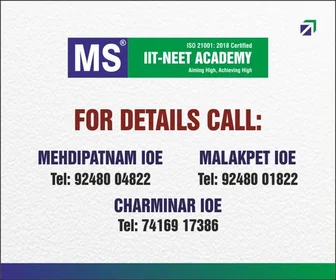
New Delhi: A joint survey conducted by the ICMR and the WHO, along with other institutes, has revealed critical medicine shortages for managing diabetes and hypertension at rural health facilities, from sub-centres to sub-district hospitals, across 19 districts in seven states.
The study has also found a shortage of specialists at the community health centre (CHC) level and these findings are similar to the rural health statistics report of 2020-21, indicating a shortfall of physicians (82.2 per cent) and surgeons (83.2.9 per cent) at the CHC-level.
The study findings, published in the “Indian Journal of Medical Research (IJMR)” suggest that among public health facilities, PHCs, district hospitals and government medical colleges in India are better prepared to manage services for diabetes and hypertension.
Across all the facilities, the domain score for equipment was the highest and for medicines, it was the lowest. However, the availability of all medicines was better at tertiary-care facilities (public and private) compared to other levels of public health facilities.
A cross-sectional survey of the health facilities was conducted in 19 districts of seven states, which included an assessment of both public and private health facilities.
The Indian Public Health Standards and other relevant guidelines were used for the assessment.
The service domain score for four domains: equipment, medicine, diagnostics capacity and staff, including the availability of guidelines, and the overall readiness score was calculated following the service availability and readiness assessment manual of the World Health Organisation (WHO).
In two phases of data collection, 415 health facilities were covered, of which 75.7 per cent were public and 24 per cent were private.
The number of facilities assessed varied across the states.
More than half (57.6 per cent) of the health facilities assessed were primary level (33.5 per cent), followed by secondary (33.5 per cent) and tertiary (10 per cent) facilities. More than half (56.3 per cent) of the health facilities were in rural areas.
More than three-fourths of all public and private health facilities reported being involved in the follow up of diabetes and hypertension patients. The most common mode of follow ups across all facilities was self-reporting by patients (61.4 to 100 per cent), except for in SCs (29.5 per cent).
At SCs, the most common mode of follow up was home visits by health workers (60.4 per cent). The availability of out-referral and in-referral registers across all levels and types of facilities was between 25 and 53.8 per cent and 14 and 61.5 per cent, respectively.
“Most public health facilities (from SCs to SDHs) reported stockouts of essential medicines for managing diabetes and hypertension. Out of the 105 SCs assessed, nearly one-third (37/105; 35.2 per cent) reported stockouts of tablet metformin, and nearly less than half (47/105; 44.8 per cent) reported stockouts of tablet amlodipine,” the study stated.
The median duration of the stockouts for the medicines ranged from one to seven months.
The SCs reported more stockouts of essential anti-diabetes and anti-hypertensive medicines compared to any other types of facilities.
These medicines were better available at government medical colleges compared to any other levels of public health facilities.
The medicine availability score at the primary health centres (PHCs) was just 66 per cent, far below the ideal threshold of 100 per cent.
“Our findings suggest that among public health facilities, PHCs, district hospitals and government medical colleges in India are better prepared to manage services for diabetes and hypertension. Across all the facilities, the domain score for equipment was the highest, and for medicines, it was the lowest,” the study said.
It mentioned the ICMR-India Diabetes Study (ICMR-INDIAB) report’s evidence of an NCD epidemic spreading to rural areas in India, in addition to the urban areas, due to changes in the lifestyle.
Therefore, improving the preparedness of the SCs will further enhance the primary-care services closer to the homes of people, it stressed.
The government has already accelerated its efforts towards strengthening Comprehensive Primary Health Care (CPHC) for achieving Universal Health Care by committing resources and efforts through its flagship Ayushman Bharat Health and Wellness Centres (AB-HWCs).
These were recently renamed as Ayushman Arogya Mandirs.
“During our assessment, the majority of PHCs (64 per cent) were converted to Health and Wellness Centres (HWCs). This indicates that PHC-HWCs were better prepared to provide comprehensive services compared to SCs, as nearly half of them (52.3 per cent) were transformed into HWCs. However, we found that diagnostic services were less available at district hospitals, indicating that secondary higher-level public health facilities were not fully prepared to manage complications of these two conditions,” the study pointed out.
Efforts to strengthen diagnostic services are essential for the continuum of care, as there will be in-referrals of patients from peripheral public health facilities to DHs, it said.
Lessons from the India Hypertension Control Initiatives (IHCI) project can be adapted to ensure a reliable drug supply and accurate information systems in primary health care facilities, it added.



